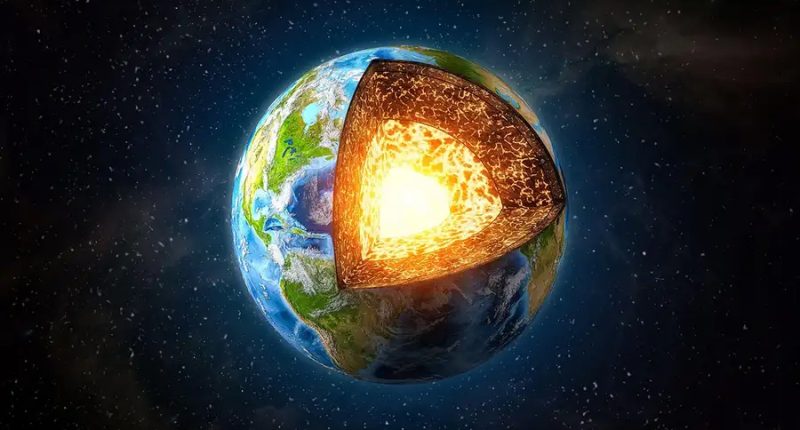PIECES of a protoplanet may still be inside of the Earth’s mantle after a collision that occurred 4.5 billion years ago, scientists claim in a new theory.
The protoplanet is dubbed Theia and crashed into Earth where Africa currently is located – there are also two massive blobs of matter buried deep below Africa leaving scientists to believe it could be parts of Theia.
A protoplanet is a large body of matter in space that is in the process of becoming an actual planet.
The protoplanet was as big as Mars when it crashed into Earth 4.5 billion years ago.
Scientists recreated a simulation of how Theia would have collided with Earth in a study.
They found that the collision process would have melted Earth’s mantle possibly allowing chucks of the protoplanet to be lodged inside.
The simulations used complex fluid dynamics.
The study was published in the journal Nature on November 1 and was done by a team of scientists at the China Academy of Sciences.
The two massive blobs of matter are also known as large low-velocity provinces (LLVPs).
“Here we show that LLVPs may represent buried relics of Theia mantle material (TMM) that was preserved in proto-Earth’s mantle after the Moon-forming giant impact,” the study said.
Most read in News Tech
“Our canonical giant-impact simulations show that a fraction of Theia’s mantle could have been delivered to proto-Earth’s solid lower mantle.”
The collision is also believed to have created the moon billions of years ago, but this is not proven.
The next step for scientists to be able to prove their theory is by comparing pieces of the moon’s mantle to pieces of the blobs of matter.
“If the lunar mantle rock and LLVP-related basalts share the same chemical signatures, they should both originate from Theia,” Yuan told The Guardian.
However, pieces of the moon’s mantle have never been retrieved before and the scientists will have to wait for future space missions before completing their theory.
“In most of the Moon-forming impact simulations, most of the lunar materials come from the impactor,” lead author Qian Yuan, a geophysicist at Caltech, told ScienceAlert.
“So we expect future missions can get lunar mantle rocks and compare that with the mantle blobs to see if they share the same chemical signatures.”
Some other scientists not involved with the study are skeptical of the bizarre theory but believe it is worth keeping an eye on.
The scientists’ findings were called “exciting and provocative” by Planetary scientist Robin Canup of the Southwest Research Institute in Boulder, Colorado, who was not involved in the study, per an interview with National Geographic.
This post first appeared on Thesun.co.uk









